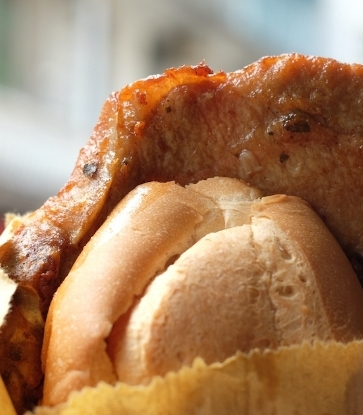André Chiang, who recently celebrated the first anniversary of his Chengdu restaurant, The Bridge, at the end of 2018, has just announced that he will be partnering with Wynn Palace in Macau to launch Sichuan Moon in spring this year. As culinary director, Chiang will present the essence of Sichuan cooking in a contemporary way at the new restaurant, even as he continues leading the charge for elevating Sichuan cuisine on the world stage.
“I aim to break the mould and showcase the essence of Sichuan dishes so that they will shine on the world stage,” he says.

To prepare for his role, the classically French-trained chef immersed himself in Sichuan cuisine, learning about the cuisine’s history, origins and culture from experienced Chinese chefs and industry experts. He also made frequent trips to the local markets with executive chef Li Shunhong to familiarise himself with the local produce.
“I felt like a child who was reading a storybook on Sichuan culture, discovering that there were so many things I didn’t know. After I started to slowly understand it and appreciate how special it was, I just wanted to share it with more people,” he says.
A Tale Of Sichuan Cuisine
Chiang’s food is not a rehashing of traditional Sichuan cuisine. Instead, it is about expressing the true character and flavours of the cuisine and presenting the essence of Sichuan cooking in a contemporary and global way. He wants to go beyond the spicy stereotype of Sichuan cooking to showcase the cuisine’s richness and elegance.

Taking to his journal on popular Chinese social media platform Weibo, he says that what he wants to do is continue to develop his brand of Sichuan cuisine. “Sichuan cuisine is ever-evolving, not something static and stuck in the yesteryears.”
For example, for this Chinese New Year at The Bridge, Chiang has created a cured meat platter that encapsulates the spirit of the season. It has all the classic flavours of traditional dried and waxed meats but is accompanied with Spanish chorizo sausages, crisp Indian lettuce and aromatic douchi (fermented black bean), all made cheekily to look like truffles. Even the popular local shaved ice dessert has taken on a Western presentation with tart berries, frozen liquor and popping candy.
An International Spotlight On Chinese Cuisine
For the last five years, Chiang has focused his attention on exploring Chinese cuisine and communicating it on a global stage, starting with his one-Michelin-starred RAW in Taipei. His dreams are of a real breakthrough for Chinese cuisine on the world stage, which has always been focused on Western cuisines for the last three decades.
"We’ll definitely see a lot of new changes in Chinese cuisine in 2019. I think people will start to see how fine this cuisine is, how elaborate and rich the history of Chinese cuisine is,” he says in an interview with the MICHELIN Guide Digital.
He’s observed that in the last year, more Chinese chefs are moving out of their comfort zones and using very elegant plating techniques to elevate Chinese cuisine. He anticipates that this will have a global impact in shifting the perception of Chinese cuisine. The Asian perception of Western cuisines used to be very narrow before, limited to French fries, steak and cream soups; this has shifted as Asians began to have a deeper understanding of unique characteristics of Spanish, French and Italian cuisines. Similarly, the Western perception of Chinese food will start to shift away from the stereotypes of spring rolls and sweet and sour pork as Chinese regional cuisines gain more traction.

Last year, Chiang travelled to Beijing for a four-hands collaboration at the Opera Bombana with Umberto Bombana, chef-owner of Hong Kong’s three-Michelin-starred 8½ Otto e Mezzo BOMBANA. As they worked together, Chiang discovered to both their surprise that Sichuan cuisine had a number of similarities to Italian cuisine: almond beancurd was a Sichuan equivalent of the Italian panna cotta; In Sichuan cuisine, there is a dish of stewed pork skin with peanut, whereas the Italians have a similar stew of pork skin and white beans. Their collaborative menu turned out to be a very complementary interweaving of both cuisines.
With the experience gained from his year in Chengdu, as well as ideas from Western cuisines and collaborations, there is much to anticipate when Chiang’s Sichuan Moon opens in Macau later this Spring.





















